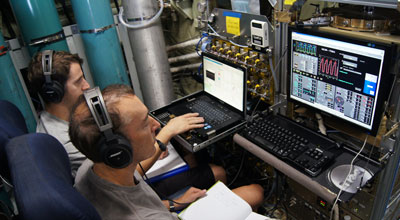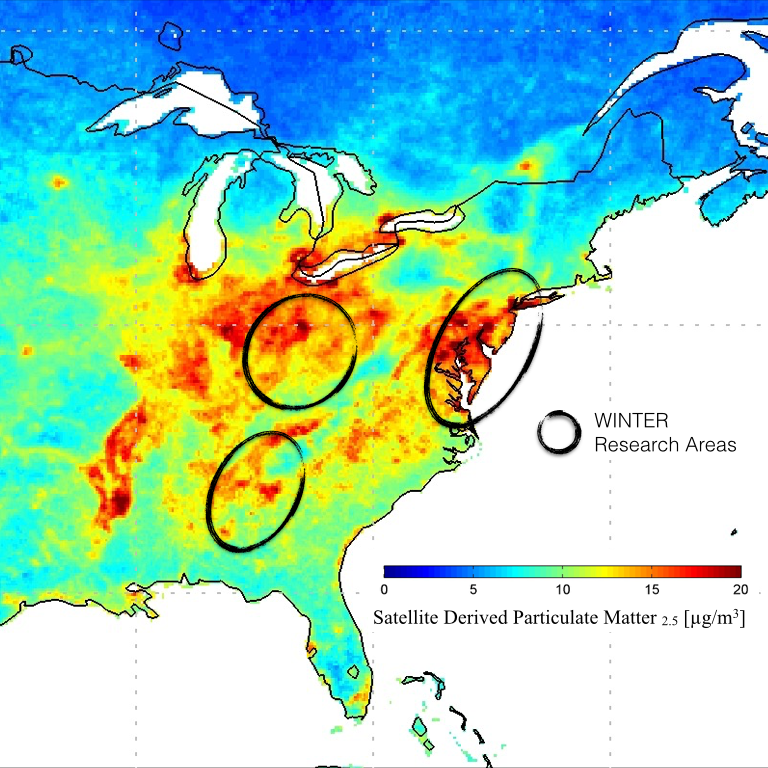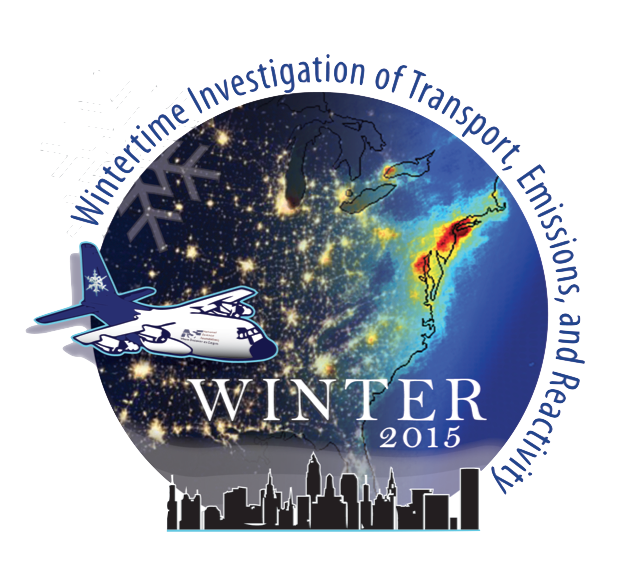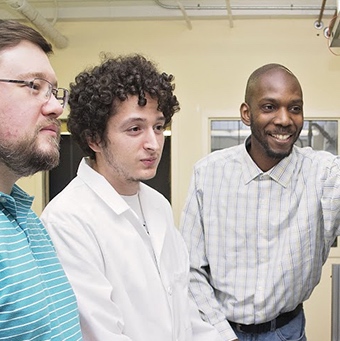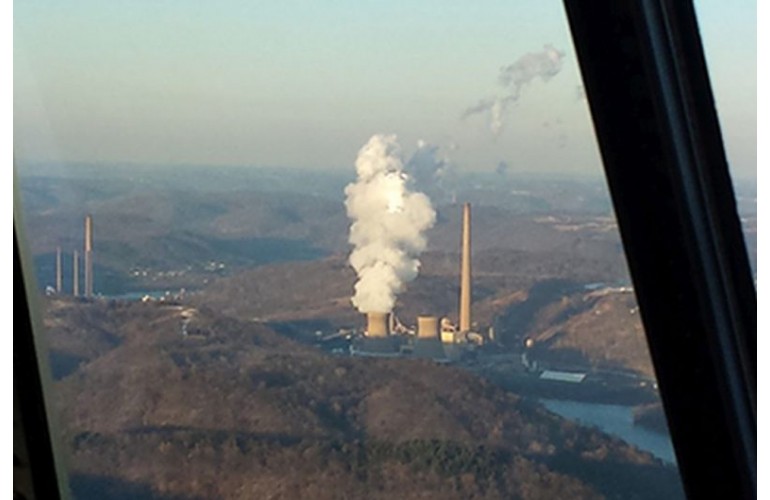Why winter air in the Eastern U.S. is still so dirty
24 July 2018 | Furity Earh and Environment
 Despite overall lower levels of harmful emissions from power plants and vehicles throughout the year, winter air pollution in the Eastern United States remains high. A new study explains why. Summer used to be the poster child for haze-containing particles that cause asthma, lung cancer, and other illnesses, researchers say.
Despite overall lower levels of harmful emissions from power plants and vehicles throughout the year, winter air pollution in the Eastern United States remains high. A new study explains why. Summer used to be the poster child for haze-containing particles that cause asthma, lung cancer, and other illnesses, researchers say.
» Read more
N.C. A&T Researchers investigate winter pollution
24 July 2018 | Black Engineer
 While several studies of summer air quality have led to tighter emission standards and reductions in pollution, the new research on winter air shows why pollution levels remain somewhat stagnant. The study was funded by the National Science Foundation (NSF) with support from the National Oceanic and Atmospheric Administration’s (NOAA) Earth System Research Laboratory.
While several studies of summer air quality have led to tighter emission standards and reductions in pollution, the new research on winter air shows why pollution levels remain somewhat stagnant. The study was funded by the National Science Foundation (NSF) with support from the National Oceanic and Atmospheric Administration’s (NOAA) Earth System Research Laboratory.
» Read more
N.C. A&T researchers study winter pollution
February 2015 | North Carolina A&T University
 Members of the N.C. A&T Atmospheric Chemistry and Physics Group are working with researchers from 14 other institutions this winter to investigate the little-known dynamics of wintertime air pollution.
Members of the N.C. A&T Atmospheric Chemistry and Physics Group are working with researchers from 14 other institutions this winter to investigate the little-known dynamics of wintertime air pollution.
» Read more
Rappahannock Community College hosts air quality presentation
27 February 2015 | Westmoreland News
A representative of the National Center for Atmospheric Research (NCAR), Alison Rockwell, came to Rappahannock Community College on February 11 to make a preliminary report on the NCAR project WINTER: Wintertime Investigation of Transport, Emissions, and Reactivity.
» Read more
NASA Langley is home base for major winter air pollution study
23 February 2015 | Daily Press
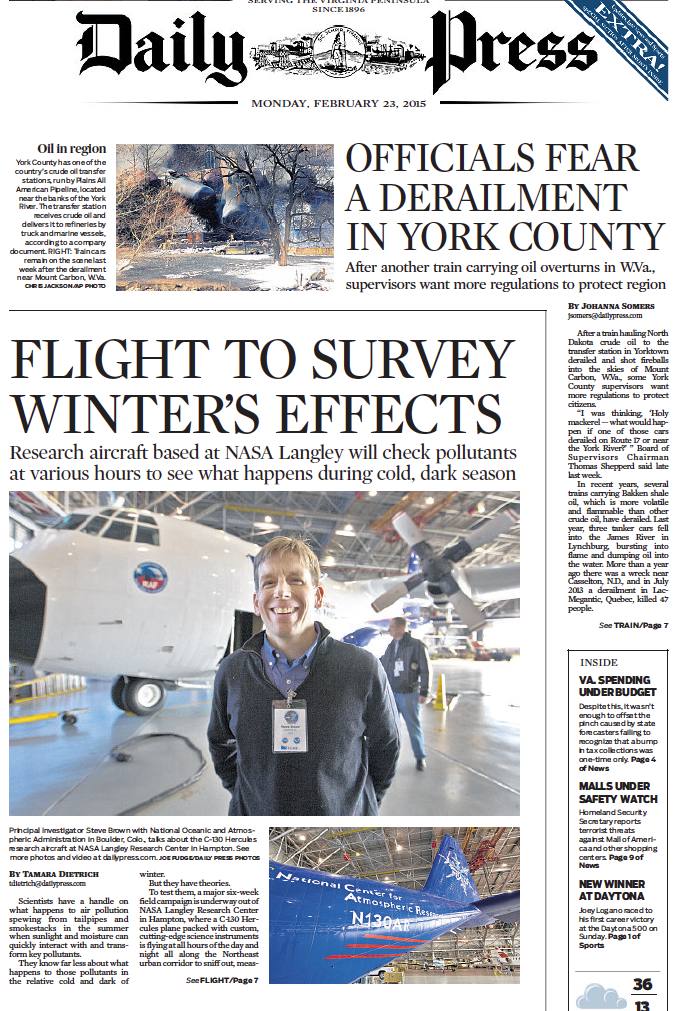 Scientists have a handle on what happens to air pollution spewing from tailpipes and smokestacks in the summer when sunlight and moisture can quickly interact with and transform key pollutants.
Scientists have a handle on what happens to air pollution spewing from tailpipes and smokestacks in the summer when sunlight and moisture can quickly interact with and transform key pollutants.
They know far less about what happens to those pollutants in the relative cold and dark of winter. But they have theories.
» Read more
Scientists zeroing in on where air pollution goes in winter
20 February 2015 | Associated Press
HAMPTON, Va. (AP) -- Flying at night over some of the nation's largest metropolitan areas, a team of scientists is trying to get a better idea of exactly how far air pollution travels and how it transforms during the cold, dark days of winter.
» Read more
Winter air campaign tracking how pollution handles the cold
20 February 2015 | UW Today
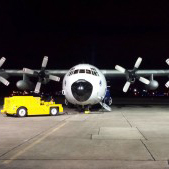 When we think about pollution, we imagine the dark clouds puffing from smokestacks or tailpipes. But those clouds quickly rise upward, follow the winds, and react with other gases and particles in the air. These processes determine how much pollution actually reaches people and the environment. And, like everything else, they are affected by the seasons.
When we think about pollution, we imagine the dark clouds puffing from smokestacks or tailpipes. But those clouds quickly rise upward, follow the winds, and react with other gases and particles in the air. These processes determine how much pollution actually reaches people and the environment. And, like everything else, they are affected by the seasons.
» Read more
On Weather with Paul Douglas
7 February 2015 | StarTribune
 I thought this story from UCAR in Boulder was interesting; here's an excerpt: "...This month, a major air quality project known as WINTER (Wintertime Investigation of Transport, Emissions, and Reactivity) takes to the air to examine pollutants across the Northeast urban corridor, Ohio River Valley, and Southeast Mid-Atlantic.
I thought this story from UCAR in Boulder was interesting; here's an excerpt: "...This month, a major air quality project known as WINTER (Wintertime Investigation of Transport, Emissions, and Reactivity) takes to the air to examine pollutants across the Northeast urban corridor, Ohio River Valley, and Southeast Mid-Atlantic.
» Read more
Cold facts of air pollution
2 February 2015 | AtmosNews
 The difference between a breath of cold air and a breath of warm air isn’t just the temperature. It’s also the pollutants they might contain. Until now, wintertime air pollution hasn’t been studied in much detail. Scientists have focused more on warm air, partly because summertime's stagnant atmospheric conditions and intense sunshine tend to worsen ozone pollution. But that's about to change as researchers turn their attention to winter air quality in the eastern United States.
The difference between a breath of cold air and a breath of warm air isn’t just the temperature. It’s also the pollutants they might contain. Until now, wintertime air pollution hasn’t been studied in much detail. Scientists have focused more on warm air, partly because summertime's stagnant atmospheric conditions and intense sunshine tend to worsen ozone pollution. But that's about to change as researchers turn their attention to winter air quality in the eastern United States.
» Read more
WINTER 2015
NOAA Earth Systems Research Laboratory
 Emission of anthropogenic pollutants to the atmosphere is a year-round phenomenon. Atmospheric chemical transformations, which play a large role in defining the impact associated with these emissions, have a strong seasonal dependence. In the warmer and more photochemically active summer months, strong oxidant formation leads to the rapid production of multiple secondary pollutants, such as ozone and organic aerosol.
Emission of anthropogenic pollutants to the atmosphere is a year-round phenomenon. Atmospheric chemical transformations, which play a large role in defining the impact associated with these emissions, have a strong seasonal dependence. In the warmer and more photochemically active summer months, strong oxidant formation leads to the rapid production of multiple secondary pollutants, such as ozone and organic aerosol.
» Read more
Dataset Documentation Requirements
